How to choose a pet bed?
It’s not an easy job to pick the right pet bed among all of the pet beds available on the market. Every dog and cat is an individual being, with their own individual needs, likes and dislikes. So, what are the main criteria for buying the right pet bed? What rules do you need to follow in order to choose the best pet bed? What you need to avoid, what are the common mistakes with choosing pet beds?
Answers to all of these questions, as well as many other tips and advice, you can find in this article! So, snuggle in with your pet friend, and get ready to discover an ultimate pet bed buying guide!
Choosing the right pet beds for dogs
Let’s start with the man’s best friend, proud and devoted companion, the Dog! (Cats will get their turn in the next section, fingers crossed that they will not take any offense.)
With such varieties in both physical and personality in dog breeds, we can talk too little about preferences that dogs share in common. Some dogs just love water, some prefer heat, some cold, some like to chew and are active, some are lazy. For all of them, comfort means a different thing. Our job now is to present to you the perfect pet bed as each type of dog sees it. So, let’s begin with all of the factors that you need to have in mind when shopping for dog pet beds!
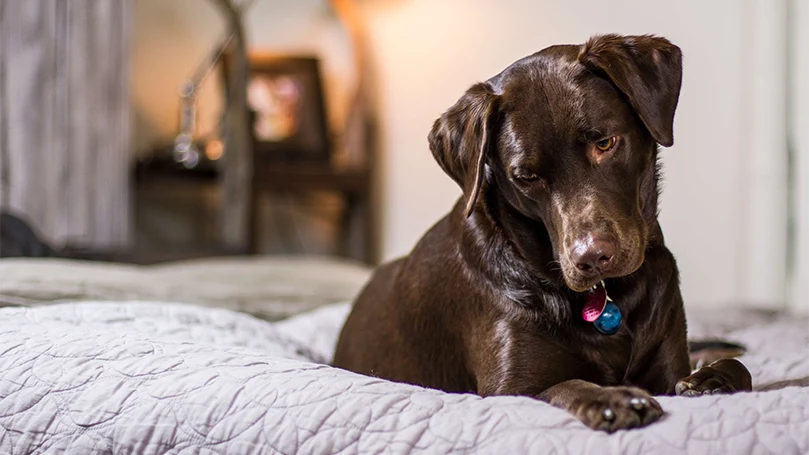
Beds for pets need to be the right size
First things first, take a tape measure and measure your dog from the tip of the tail to the tip of the snout. Then, measure the distance between your dogs’ paws to the highest point on their upper back (in standing position). Now, add at least 9 inches (preferably 10 or 11) to those numbers, and you got yourself a pet bed size for your dog! These numbers represent a “neutral” or starting pet bed size. Let’s clarify this a bit.
What else?
There are some additional factors that affect these numbers. These factors are quite important, so, let’s talk about them:
- They tend to sleep in one position and don't roll around a lot – the starting bed size can be applied.
- Your dog changes positions or sleeps on their back – add at least 5 inches on starting size.
- Your pupper likes to curl up when sleeping – starting size can apply or even reduced (although reduction is not very advisable).
- They like to stretch when preparing to fall asleep or when sleeping – add up to 10 inches on starting size (you can even choose a pet bed with 50% greater dimensions that a starting size). This is especially recommended to do with the Great Dane. This dog breed requires a special bed for two reasons. First, they are large, love to stretch and are a bit lazy. Second, they need to lay around after a meal. Good rest after a meal, prior to any activity is a must. Running around right after eating is very dangerous, even life-threatening for this breed. So, they need a comfy bed that is going to support their weight for many hours.

The temperature is also important
Some dogs prefer cold, others warm weather. So, the same goes for the sleeping surface. If your dog prefers cold weather, be sure to pick the bed/mattress with the cooling effect. If your dog prefers warmth, be sure to choose the bed/mattress that retains warmth. Here is the list of dog breeds that prefers cold, moderate or warm sleeping surface:
- Choose cooling pet bed for dog breeds that are originate from parts of the world with cold weather (such as Alaskan Malamute), that enjoy swimming in cold water (such as Newfoundland or some retriever dog breeds), that have a lot of fur (such as Komondor or Old English Sheep Dog), that are used as working dogs in countries with high altitude (such as Saint Bernard), that were used as sheepherder dogs (Great Pyrenees) or that were used as guarding dogs for large territories in colder climates (such as Tibetan Mastiff or Black Russian Terrier).
The list of breeds that require cooling pet bed
American Eskimo Dog, Scottish Deerhound, Cardigan Welsh Corgi, Alaskan Klee Kai, Alaskan Malamute (cooling bed is a must), Newfoundland, Akita, Bearded Collie, Belgian Malinois, Belgian Sheepdog, Berger Picard, Berne doodle, Cockapoo, Collie, Wirehaired Pointer Griffon, Tibetan Terrier, Siberian Husky, Briard, Tibetan Mastiff (definitely needs cooling super king size pet bed).
Samoyed, Scottish terrier, Labradoodle, Japanese Spitz, Old English Sheep Dog, Saint Bernard, Béarnaise Mountain Dog, Great Pyrenees, Pyrenean Shepherd, German Shepherd, Puli, Bullmastiff, Bouvier des Flandres, Afghan Hound, Shiba Inu, Clumber Spaniel, American English Coonhound, American Foxhound, English Cocker Spaniel, West Highland White Terrier, Wirehaired Pointing Griffon, Karelian Bear Dog, Welsh Springer Spaniel, Irish Setter, Irish Terrier, Leonberger, Swedish Vallhund, Lagotto Romagnolo, Sussex Spaniel, Standard Schnauzer, Pekingese, Jack Russell, Giant Schnauzer, Anatolian Shepherd Dog, Australian Cattle Dog, Komondor, Appenzeller Sennenhunde, Bedlington Terrier, Barbet, Black Russian Terrier, Finnish Lapphund, Border Collie, Borzoi, Blue Lacy, Caucasian Shepherd Dog (cooling surface is highly recommended) and Chow Chow.
The material to go for in this case:
Choose moderately warming pet bed for dog breeds that originate from moderate or warmer climates (such as Dogo Argentino) and still have a great amount of fur (such as Poodle) or are active, territorial or working dogs that love the outdoors (such as Neapolitan Mastiff).

The list of breeds that require moderately warming pet bed:
American Pit Bull Terrier, Boxer, Dogo Argentino, German Shorthaired Pointer, Greyhound, Great Dane, Neapolitan Mastiff, Poodle, Beagle, Pointer, Rottweiler, Rat Terrier, Stabyhoun and Tibetan Spaniel.
The materials to go for in this case: denim, cotton, bamboo or foam with a breathable cover
Choose warming pet bed for dogs that were bred only for personal protection (such as Doberman Pinscher), dogs that originate from parts of the world with a warm climate (such as Basenji), dogs that have short or little fur (such as Whippet) and certain lapdogs (such as Yorkshire Terrier).
The list of breeds that require warming pet bed:
American Bulldog, Bulldog, Basenji, Yorkshire Terrier, Whippet, Chinese Crested, Silky Terrier, Doberman Pinscher, English Toy Spaniel, Dalmatian, French Bulldog, Maltese, Cane Corso, Dachshund, Italian Greyhound, Chinese Shar-Pei, Miniature Pinscher, Pharaoh Hound, Pug, Saluki, Vizsla and Schnoodle. The best material to use in this case is foam or down.
The level of support reduces health risks
The adequate firmness and support are the most important for dogs that are prone to hip dysplasia. Large dog breeds suffer from this disease much more often than the smaller bread do. So, for larger dog breeds be sure to choose firm, responsive pet beds that are not going to collapse under the dog’s weight. Firm memory foam can be of great help to dogs who tend to have problems with hip dysplasia or other bone-related diseases.
We know that large dog breeds, unfortunately, tend to develop a lot of joint issues simply because of their large weight. If your large dog is also an active breed, firm and supportive bed is a must. Go for beds that provide responsiveness to pressure. This can reduce stress on joints significantly. Nice choice, in this case, can be The Casper Memory Foam Dog Bed in large size (for dogs up to 40 kg).
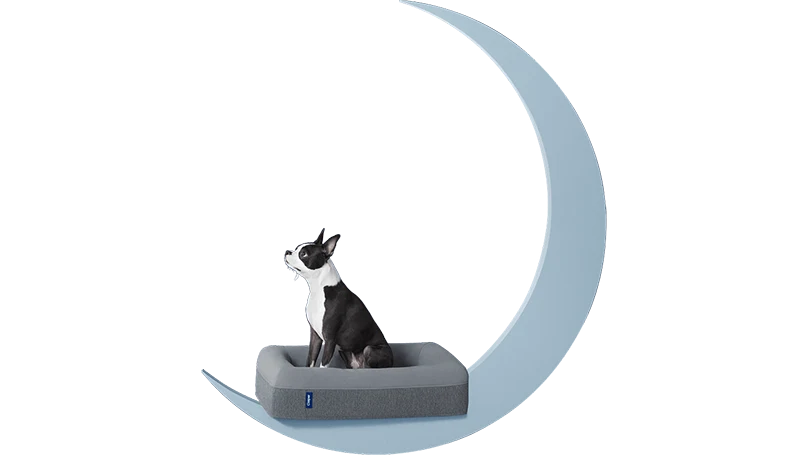
What about small breeds?
Now, as for the small dog breeds, they can enjoy softer beds. Toy dogs and lapdogs prefer snuggly surfaces. So, they can really appreciate some soft, down of feather beds that they can sink into.
Lapdogs like soft surfaces for two main reasons. First is psychological – they like to snuggle. The other is physical – their bodies are gentle and requires gentle pressure. So, if you have a King Charles Spaniel, go for a royal soft pet bed.
Also, soft beds are not dangerous for the health of the small dogs. These dogs have small weight and put a lot of pressure neither on joints nor on the surface they sleep on.
Bed type according to a lifestyle
Now, as for the small dog breeds, they can enjoy softer beds. Toy dogs and lapdogs prefer snuggly surfaces. So, they can really appreciate some soft, down of feather beds that they can sink into.
Lapdogs like soft surfaces for two main reasons. First is psychological – they like to snuggle. The other is physical – their bodies are gentle and requires gentle pressure. So, if you have a King Charles Spaniel, go for a royal soft pet bed.
Also, soft beds are not dangerous for the health of the small dogs. These dogs have small weight and put a lot of pressure neither on joints nor on the surface they sleep on.
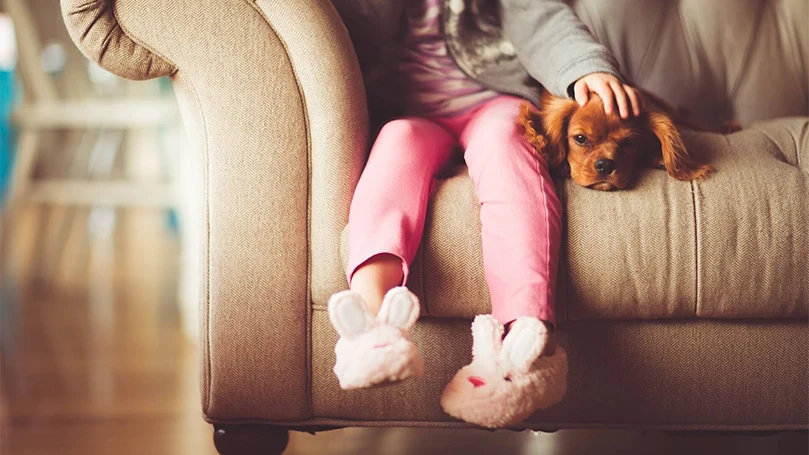
How neat is your dog?
If you have a dog that loves to jump in the water, role in the mud and 5 holes under 10 minutes, you need to worry about removable pet bed covers. With active dogs that love the outdoors, you need a cover that can be removed and washed easy and fast.
If your dog is a neat Maltese princess, the cover is not the priority on your list.
Bed and the chewing habits
Some dogs like to chew on everything on their site, furniture, pet bed, your shoes… Others don’t have this problem. This depends mostly on the dog’s personality, and, let’s face it, the training.
So, if your dogs like to chew on everything, get a sustainable pet bed made of strong materials. Denim is not a bad choice here.
If your dog doesn’t have chewing tendencies, you can treat them with a nice feather bed.
(If your dog likes to chew on objects that are not their own a lot, consider talking to a professional and asking for an advice. Although chewing on toys and other stuff is something that dogs do, sometimes it can indicate a problem. If the chewing is over excessive, it can indicate issues with: anxiety, loneliness, pain or poor training.)
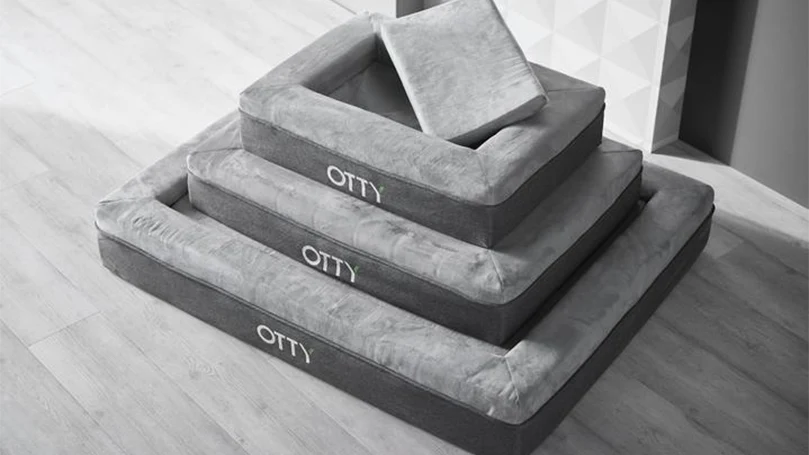
We recommend Otty pet beds because they are awesomely designed and comfortable to pets of all sizes.
How fashionable is your dog?
Getting a plain, boring pet bed for a White Pomeranian is simply not a way to go. These little dogs like to be pretty and fashionable. This is not just for your enjoyment, it’s for theirs too. Many experts agree that lapdog breeds, and especially show dogs, recognize and appreciate the attention. They enjoy grooming and all of the attention they get. This actually benefits their mental state.
On the other hand, Caucasian Shepherd Dog couldn’t care less about the looks of his bed. He only uses it to recharge for another professional patrolling of your yard, anyways.
Is your dog prone to anxiety?
Dogs that have anxiety issues prefer snuggly pet beds. Getting a pet bed that makes them feel “surrounded” and protected is a way to go here. Avoid flat beds in this case. Choose ones that allow a dog to “crawl” into them. If the anxiety issue is strong, a dog crate can be a good option.
A great choice for dogs that have anxiety issue can be OTTY Dog Pet Memory Foam Mattress Bed.
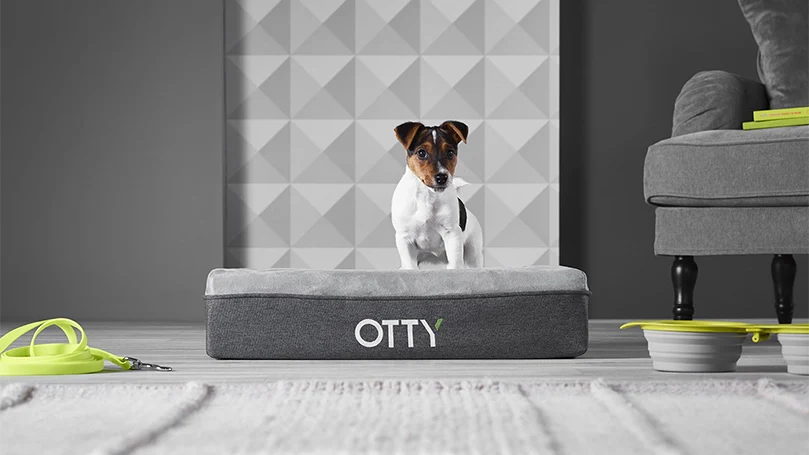
The surface material and the respiratory system issues
Same as humans, some dogs have a sensitive respiratory system and require hypoallergenic beds. Two types of dog breeds fall into this category:
- Ones that have poor respiratory system due to the shape of the snout, such as Bulldogs and Pugs.
- Ones that are prone to allergies, such as Golden Retriever, Labrador Retriever, Boxer, Boston Terrier, Lhasa Apso, Chinese Shar-Pei, Scottish Terrier, Dalmatian, Wirehaired Fox Terrier and Shih Tzu.
These dog breeds require pet beds that are not prone to dust mites and that are easy to keep clean. Easy to remove bed cover is a plus here.
Choosing the purrfect pet beds for cats
This part is for the cat lovers! So, take your cute little kitten and pay attention, because we are going to discover the right way to choose a cat bed.
Oh, the lovely warmth
Cats love warm surfaces to sleep on, all cat lovers know that! Go for foam, feather or down, you can make a mistake here!

Comfort as the stress lease method
Cats love to snuggle in soft and warm materials in order to relax and let go of the stress. Nice, soft, comfy bed is a great choice for every cat. Now, if your cat is a bit older, you can go for the memory foam. This can help your cat to get rid of the joint and back pain caused by the age, activities or previous injuries.
The personality of a cat must be considered
Not all the cats are the same – but all the cats like to sleep a lot. Study your cat and their behaviour. Do they prefer privacy during sleep? Do they feel secure when asleep and fall asleep in front of you and your guests? Are they tensed or easy going?
Cats that behave like they are always suspicious will appreciate the pet beds that give them a nice view, but surround them with extra height. Something like a cat-fortress is a way to go here.
Cats that are relaxed will prefer open types of beds. This way they will always feel like they are connected with other members of the household.
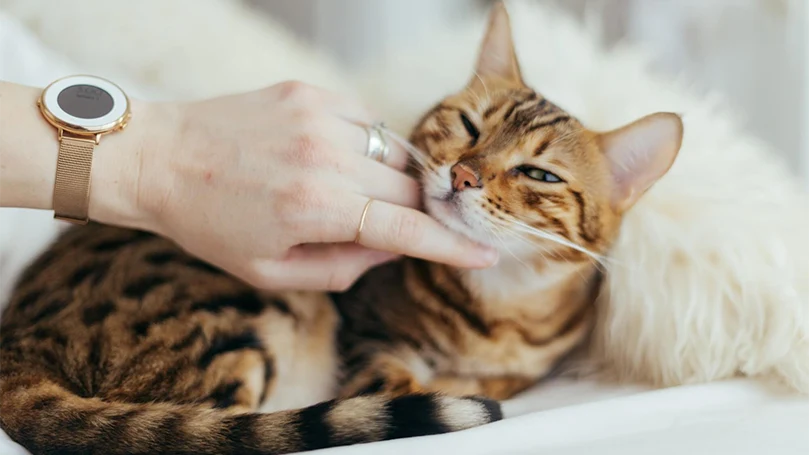
The sleeping habits
Think about your cats previous sleeping habits. Do they like to stretch a lot and sleep totally relaxed? Do they like to curl up or they like to sleep in every possible position?
- If your cat likes to take up some room while sleeping – buy a bed that 5 inches longer and wider than the cat. (The measuring instructions for a cat are as same as for dogs. Just add a few extra inches so that cat can have room to stretch.)
- If your cat tends to curl up – go for a snuggly bed!
- If the cat tends to change the sleeping positions – go for the memory foam bigger bed (memory foam will absorb pressure and thus the changing of the positions will not be an uncomfortable experience).
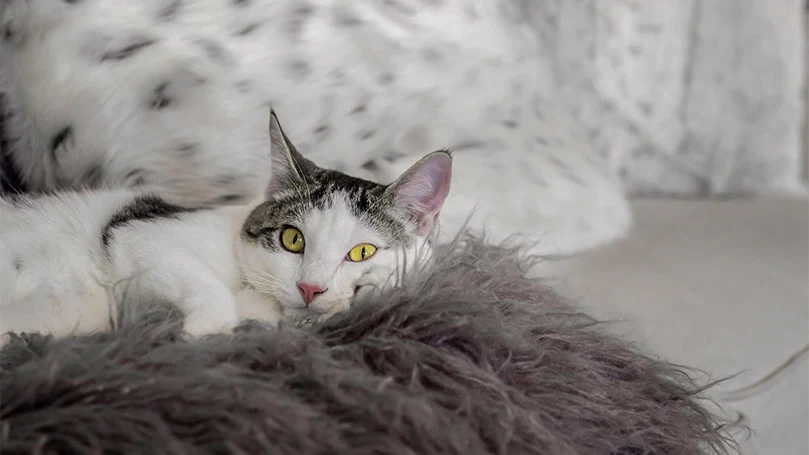
Some extra tips
We went through all of the key points of pet bed shopping. Now, when you know which pet bed to get, let’s see some extra tips about pets’ sleepy time.
- If you have a cat, consider the height. Many cats love sleeping on windowsills or even cabinets. These positions give them a nice view and the sense of control.
- If you have a guard dog, consider the place. Guard dogs usually prefer to have a view of the doors and other important entrances in rooms and the house in general.
- If you have a lapdog, consider the attention. Lapdogs love to be close to their owners’ beds.
- Always have in mind your pet’s history of sleeping habits. This can be of a great help to you when buying a new pet bed.
- Use toys to help your pet to get used to the new bed. Objects that your pet enjoys can help a lot in a stress-free moving to a new bed!
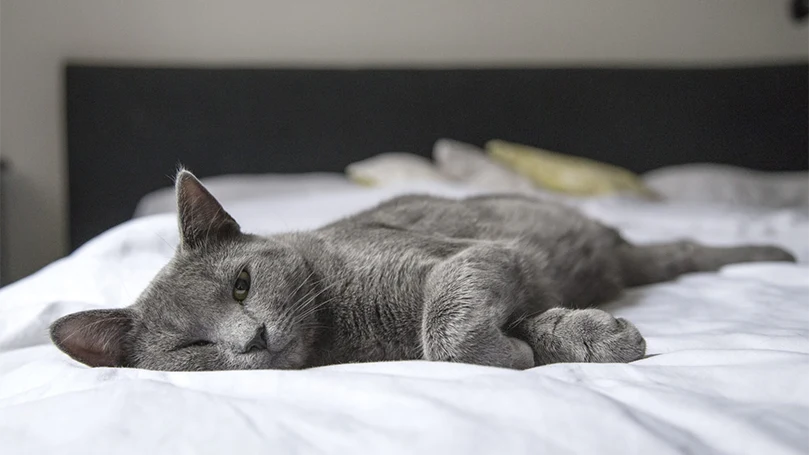
Conclusion
When you want to buy a new pet bed, always think first of your pet’s size, health and previous sleeping habits. So, when you do pick a pet bed, always test your decision with these questions:
- Is this bed going to spacious enough for my pet?
- Is this bed supportive enough for my pet’s weigh?
- Does my dog have hip dysplasia? Is this pet bed good for hip dysplasia?
- Does my pet have anxiety issues? Is this bed good for pets with anxiety?
- Does my pet suffer from allergies?
Answering these questions will always prevent you from making a bad decision. Buying perfect pet beds doesn’t need to be so hard if you have these guidelines in front of you. So, follow our tips and surprise your pet with a good night’s sleep.

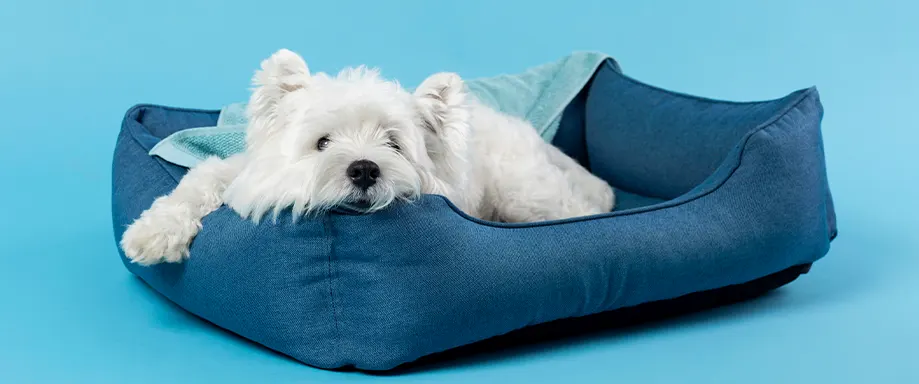













There are no comments yet
"*" indicates required fields